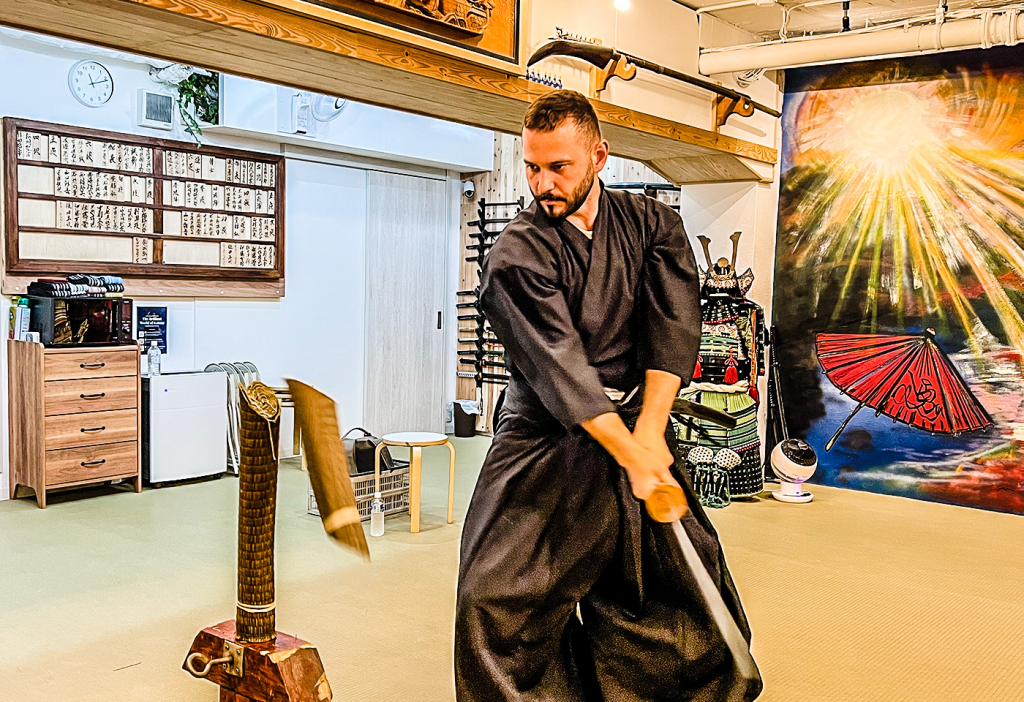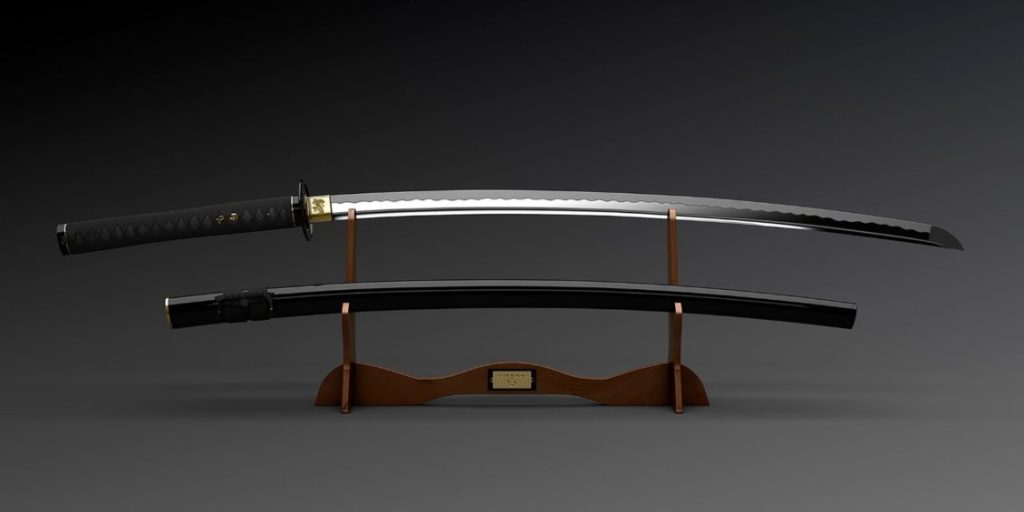Introduction
Few swords can compare to the katana’s mystique and attraction in the world of legendary weapons. This graceful, curving blade is more than simply a weapon of battle; it is also an artistic creation, a spiritual relic, and a representation of the honour of a warrior. It is commonly associated with the heroic samurai of feudal Japan. Imagine the brilliant light of a forge at first light, a skilled swordsmith painstakingly folding steel to create a weapon of lethal accuracy and beautiful beauty out of raw metal. Imagine the polished blade of the katana, honed over generations of skill, slicing through the air with effortless grace. The history of the katana is fascinating to historians, fighters, and collectors alike since it is a product of tradition, skill, and an unwavering pursuit of perfection. This essay explores the qualities that make the katana unique, including its exquisite design, exceptional use, historical significance, and cherished status in Japanese philosophy and society.

The Art of Crafting a Katana
Traditional Forging Techniques
The katana’s creation is a meticulous process that involves several stages, each requiring a high degree of skill and precision. The traditional Japanese swordsmith, or tōkō, follows a time-honoured method that dates back centuries. This process begins with selecting the right type of steel, typically tamahagane, a high-quality, carbon-rich steel produced from iron sand. The forging process is an art in itself, where the tamahagane is heated in a furnace to a precise temperature, making it malleable enough to be hammered. The initial hammering phase is crucial as it removes impurities, shaping the raw steel into a more refined form. Following this, the steel undergoes a distinctive folding technique, where the metal is repeatedly folded and hammered. This process is not merely repetitive labour but a deliberate act that ensures the carbon within the steel is evenly distributed, which is essential for the blade’s overall quality. Each fold reduces the presence of impurities and enhances the steel’s structural integrity, resulting in a blade with a remarkably fine grain structure. The repetition of this folding and hammering, often done thousands of times, bestows the katana with its legendary strength and flexibility. Unlike European swords, which were often cast from a single piece of steel, the katana’s construction method creates a composite structure of multiple layers, each contributing to the sword’s resilience and sharpness. This meticulous process, steeped in tradition and requiring extraordinary skill, culminates in a blade that is not only a formidable weapon but also a symbol of the relentless pursuit of perfection.

Differential Hardening
One of the defining features of a katana is its differential hardening, achieved through a process called yaki-ire. In this meticulous technique, the swordsmith coats the blade with a special clay mixture, applying a thicker layer on the spine and a thinner layer on the edge. This careful application of clay is crucial for the blade’s performance. When the blade is heated to a high temperature and then rapidly quenched in water, the different thicknesses of the clay cause the edge to cool and harden swiftly, while the spine cools more gradually and remains softer. This differential hardening creates a blade that is exceptionally hard and sharp along the edge but flexible and resilient along the spine, allowing it to withstand the stresses of combat without breaking. The contrast between the hard edge and the softer spine gives the katana its legendary combination of sharpness and durability. Furthermore, this process results in the katana’s distinctive curved shape, known as sori. The curvature is not merely an aesthetic feature; it significantly enhances the katana’s cutting ability. The sori allows for smoother, more efficient slicing motions, reducing resistance as the blade moves through a target. This curvature is a hallmark of katana’s design perfection, balancing form and function. The yaki-ire process, with its precise control of temperature and timing, is a sophisticated technique that embodies the skill and knowledge of the swordsmith. It is this attention to detail and mastery of metallurgical principles that sets the katana apart from other swords, making it a weapon of unmatched elegance and effectiveness.Superior Functionality.
Cutting Efficiency
The katana’s design is optimised for cutting. Its curved, single-edged blade allows for swift, fluid motions, making it an exceptionally effective cutting weapon. The blade’s sharpness, combined with its unique structure, enables it to cut through targets with minimal resistance. This cutting efficiency is further enhanced by the katana’s balance, which allows for precise control and manoeuvrability.
Versatility in Combat
Historically, samurais used the katana in various combat situations, both on foot and mounted. Its versatility made it a preferred weapon for close-quarters combat. The katana could be used for slashing, thrusting, and parrying, making it a versatile and formidable weapon. The katana’s lightweight design also meant that it could be wielded with speed and agility, giving its user an advantage in battle.

Durability and Resilience
The katana’s unique construction contributes to its durability and resilience. The combination of hard and soft steel layers, along with the differential hardening process, results in a blade that can withstand significant impact without breaking or chipping. This durability made the katana a reliable weapon for samurais, who needed a sword that could endure the rigors of combat.
Historical Significance
The Rise of the Samurai
The katana is inextricably linked to the history of the samurai, the warrior class of feudal Japan. During the Kamakura period (1185-1333), the samurai emerged as a dominant force in Japanese society. The katana became the symbol of the samurai’s status and honour, representing their martial prowess and adherence to the bushido code.

The bushido code, or “the way of the warrior,” emphasised virtues such as loyalty, honour, and discipline. The katana was seen as an extension of the samurai’s soul, and losing or dishonouring one’s sword was considered a grave disgrace. The katana’s significance in samurai culture is underscored by the meticulous care and reverence with which it was treated, from its forging to its maintenance and use in combat.
Cultural and Spiritual Symbolism
Beyond its practical use as a weapon, the katana holds deep cultural and spiritual symbolism in Japan. The process of crafting a katana is viewed as a spiritual journey, with the swordsmith pouring their skill, dedication, and spirit into the creation of each blade. This spiritual aspect is reflected in the reverence with which the katana is treated, both by its creator and its wielder.
The katana also appears in various aspects of Japanese culture, from literature and art to rituals and ceremonies. It is often depicted in historical narratives, epic tales, and artworks, symbolizing the virtues and values of the samurai. The katana’s presence in these cultural expressions further cements its status as a symbol of Japanese heritage.
The Role of Katana in Japanese Culture and Philosophy
Zen and the Art of Swordsmanship
The practice of swordsmanship in Japan is closely linked to Zen Buddhism, which emphasises mindfulness, discipline, and the cultivation of inner peace. Many samurai adopted Zen practices to enhance their martial skills and mental fortitude. The act of wielding a katana, with its demands for precision, focus, and control, was seen as a form of moving meditation.

The katana’s creation and use are imbued with a sense of ritual and discipline that aligns with Zen principles. The sword becomes not just a weapon but a tool for self-cultivation, where the practitioner strives for mastery over both the blade and their own mind. This philosophical approach to swordsmanship highlights the katana’s role as a conduit for personal growth and spiritual development.
Modern-Day Appreciation
In contemporary times, the katana continues to be celebrated and appreciated, both in Japan and around the world. While the era of the samurai has long passed, the katana’s legacy endures in various forms. It is cherished by collectors, martial artists, and enthusiasts who recognise its historical significance and craftsmanship.

Modern-day practitioners of kendo, iaido, and other martial arts still use the katana in their training, preserving the techniques and philosophies of the samurai. The katana is also a popular subject in popular culture, appearing in films, books, and video games, where it is often portrayed as a symbol of honor, skill, and heroism.
Conclusion
The katana’s special status is the result of a harmonious blend of craftsmanship, functionality, history, and cultural significance. Its unique forging process, superior cutting ability, and durability make it a remarkable weapon, while its historical and spiritual associations elevate it to a symbol of Japanese heritage. The katana’s enduring appeal lies in its ability to transcend its role as a mere weapon, embodying the virtues of the samurai and the philosophical depth of Japanese culture. In understanding what makes the katana so special, one gains insight into the values and traditions that have shaped Japanese society.





